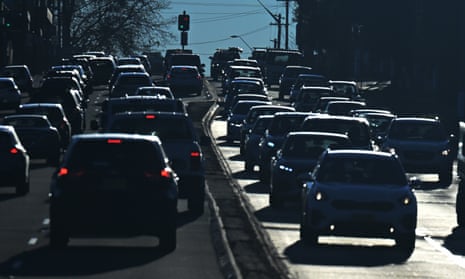Cars driven by Australians are consistently consuming more fuel than their marketed efficiencies, investigations have found, with the latest tranche of “real-world” testing finding one car used 31% more petrol than its advertised rate.
The Australian Automobile Association testing – funded by the federal government – found that eight of the 21 cars examined in its latest round of testing consumed more petrol in real road driving conditions compared with the efficiency rates calculated by their manufacturers in laboratories.
The latest results cover a mix of SUVs, passenger cars and utes, with 11 of the 21 vehicles tested delivering fuel consumption within 5% of lab test results, while eight exceeded their lab test fuel consumption by 6% or more. Conversely, the AAA found that two vehicles had on-road fuel consumption 10% to 13% lower than their lab results.
“One 1.2-litre vehicle had similar on-road fuel consumption to several 2-litre cars, and a hybrid SUV had higher petrol consumption than a similar-sized conventional SUV,” said AAA’s managing director, Michael Bradley.
The Suzuki Swift 2023 recorded the highest discrepancy in fuel consumption, with the small car using 6.3 litres of fuel per 100km in the AAA’s real-world testing – 31% more than the lab-tested advertised rate of 4.8 litres.
In terms of SUVs, Mazda’s CX-5 2023 was found to use 15% more fuel in its real-world testing than its lab-calculated rate of 6.9 litres per 100km, while the Skoda Kamiq 2023 used 14% more than its lab-calculated rate of 7.2 litres per 100km.
In the real-world tests, Mazda’s CX-3 2023 and Subaru’s Forester Hybrid 2023 used 11% and 10% more than their lab test consumption rates respectively.
Meanwhile, Volkswagen’s Tiguan 2023 performed better in the AAA’s real-world tests than its lab test indication, using 13% less fuel than its advertised rate of 7.7 litres per 100km, while the Kia Cerato 2023 used 10% less fuel than its marketed rate of 7.4 litres per 100km.
Tailpipe emissions were also measured, with six vehicles’ on-road emissions exceeding current or future lab-regulated limits. Three exceeded the limits for oxides of nitrogen, one had on-road carbon monoxide emissions more than double the regulated limit, while two exceeded particle emissions limits set to be introduced in December 2025.
The Hyundai Venue 2022, Mazda BT-50 2023 and Toyota HiLux 4x4 2023 recorded nitrogen oxide emissions above regulatory lab limits, while the Suzuki Swift 2023’s carbon monoxide emissions also breached limits.
Bradley said “these tests show that when comparing vehicles, consumers and fleets cannot assume that vehicle performance as assessed by mandatory lab tests will translate into real-world savings or emissions reduction”.
after newsletter promotion
He said the testing program was helping address greenwashing concerns and could make the government’s new vehicle efficiency standard “more robust and more effective”.
The testing was conducted in Victoria’s Geelong region in conditions the AAA said were strictly controlled and in line with European Union legislation that “ensures fuel consumption and CO2 results are repeatable and minimises the influence of human factors such as driving style and changing traffic flows”.
The four-year testing program the AAA has been tasked with will examine 200 cars, SUVs and utes, including electric vehicles, with EV testing protocols now in development.
Volkswagen, which owns Skoda, responded to the Kamiq’s discrepant test results. “Daily consumption figures can vary even on the same roads. According to the AAA, our Volkswagen Tiguan bettered its quoted figure by a comparable margin,” Volkswagen Australia.
Other carmakers in the AAA report were contacted for comment.
